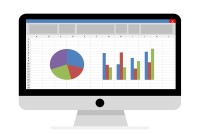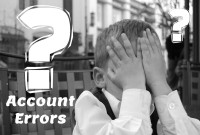- Home
- Business Processes
- Industry Knowledge
- Aerospace Industry
- Automotive Industry
- Banking Domain
- BFSI Industry
- Consumer/ FMCG Industry
- Chemicals Industry
- Engineering & Construction
- Energy Industry
- Education Domain
- Finance Domain
- Hospitality Domain
- Healthcare Industry
- Insurance Domain
- Retail Industry
- Travel and Tourism Domain
- Telecom Industry
- Leadership Skills
- eLearning
- Home
- Business Processes
- HRMS & Payroll
- Digital Age and Dynamic Business Environment
Digital Age and Dynamic Business Environment
The digital age, as per yourdictionary.com is also called the information age, is defined as the time period starting in the 1970s with the introduction of the personal computer with subsequent technology introduced providing the ability to transfer information freely and quickly.
The digital age, as per yourdictionary.com is also called the information age, is defined as the time period starting in the 1970s with the introduction of the personal computer with subsequent technology introduced providing the ability to transfer information freely and quickly.
The time period in which we live now where Internet and email are available is an example of the digital age.
The digital age technologies have displaced established technology resulting in a completely new way of doing business and creating opportunities for emergence of a new industry.
These technologies have disrupted the way traditional companies have conducted businesses and both old and new businesses must embrace these disruptive technologies to stay relevant and to meet customer needs.
Here are a few examples of disruptive technologies in 1990’s that transformed established businesses to newer ways of working:
- personal computer replaced typewriter
- Internet enabled Email replaced letter-writing disrupting greeting card industries.
- Cell phones enabled people to call anywhere disrupting telecom industry.
- Laptop and mobile computing made mobile workforce possible.
- Smartphones disrupted pocket cameras, MP3 players, calculators and GPS devices,
- Social networking disrupted telephone, email, instant messaging and event planning.
The last decade has seen an increased intensity in industrial competition, in which cycle times are shrinking and the volatility, uncertainty, complexity, and ambiguity have opened opportunities and challenges alike
The above listed are just a few examples of disruptions in the 1990’s that have set the stage for continuous evolution in technology to what is observed today. Business services functions – finance, human resources, procurement and IT – are under pressure to adapt the way they deliver services to the demands of the digital age.
Related Links
You May Also Like
-
There are two commonly used methods of accounting - Cash Basis and the Accruals Basis. Understand the difference between accruals and reversals. Recap the earlier discussion we had on accruals and reversals and see the comparison between these two different but related accounting concepts. Understand how the action of accruing results in reversals subsequently in the accounting cycle.
-
What Is a General Ledger? General Ledger (also known in accounting as the GL or the Nominal Ledger) is at the heart of any accounting system. A general ledger is the master set of accounts that summarize all transactions occurring within an entity. Ledger is the skillful grouping and presentation of the Journal entries. Learn the accounting fundamentals, general ledger process, and general ledger flow.
-
GL - Unearned / Deferred Revenue
Unearned revenue is a liability to the entity until the revenue is earned. Learn the concept of unearned revenue, also known as deferred revenue. Gain an understanding of business scenarios in which organizations need to park their receipts as unearned. Look at some real-life examples and understand the accounting treatment for unearned revenue. Finally, look at how the concept is treated in the ERPs or automated systems.
-
In this article we will focus on and understand the accounting process which enables the accounting system to provide the necessary information to business stakeholders. We will deep dive into each of the steps of accounting and will understand how to identify accounting transactions and the process for recording accounting information and transactions.
-
A subsidiary is a company that is completely or partly owned by another corporation that owns more than half of the subsidiary's stock, and which normally acts as a holding corporation which at least partly or wholly controls the activities and policies of the daughter corporation.
-
Multitude of these legal and operational structures clubbed with accounting and reporting needs give rise to many reporting dimensions at which the organization may want to track or report its operational metrics and financial results. This is where business dimensions play a vital role.
-
Business Metrics for Management Reporting
Business metric is a quantifiable measure of an organization's behavior, activities, and performance used to access the status of the targeted business process. Traditionally many metrics were finance based, inwardly focusing on the performance of the organization. Businesses can use various metrics available to monitor, evaluate, and improve their performance across any of the focus areas like sales, sourcing, IT or operations.
-
Explore the concept of journal reversals and understand the business scenarios in which users may need to reverse the accounting entries that have been already entered into the system. Understand the common sources of errors resulting in the reversal of entries and learn how to correct them. Discuss the reversal of adjustment entries and the reversal functionalities in ERPs.
-
Different Types of Organizational Structures
Modern business organizations run multiple product and service lines, operate globally, leverage large number of registered legal entities, and operate through complex matrix relationships. To stay competitive in the current global business environment, they must often develop highly diverse and complex organizational structures that cross international borders.
-
Introduction to Legal Entities Concept
Modern business organizations operate globally and leverage a large number of registered legal entities, and operate through complex matrix relationships. To stay competitive in the current global business environment, they must often develop highly diverse and complex organizational structures that cross international borders. Learn more about Legal Entities and their importance for businesses.
Explore Our Free Training Articles or
Sign Up to Start With Our eLearning Courses

About Us
Learning
© 2023 TechnoFunc, All Rights Reserved









